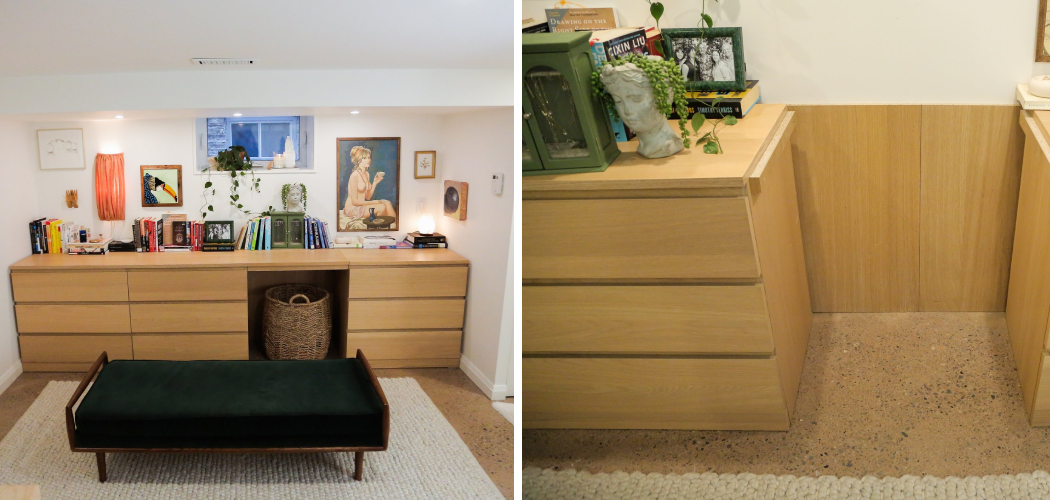A common issue encountered when arranging furniture in a room is the gap that often exists between a dresser and the wall. This gap not only creates an unsightly visual break in the room’s aesthetic but also allows dust and debris to accumulate in hard-to-reach areas.
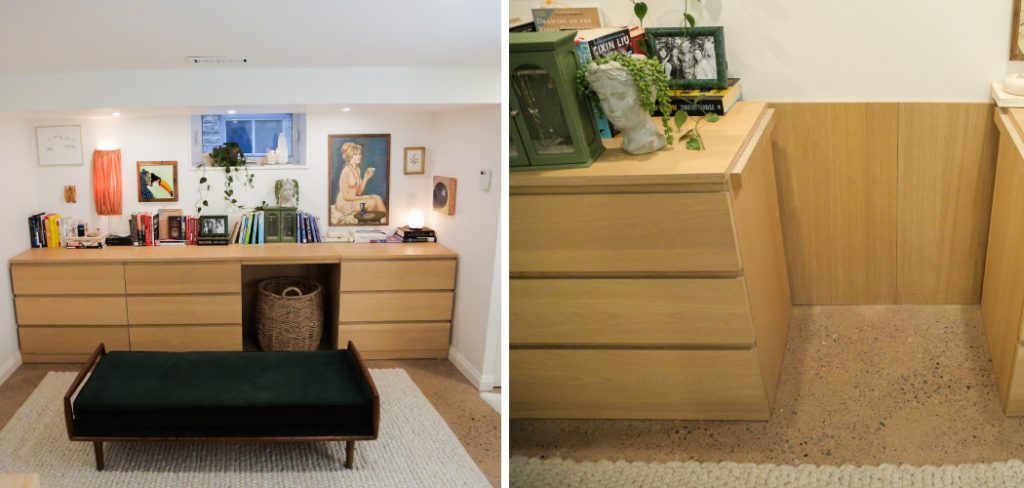
Fortunately, there are various practical and creative methods to cover the gap and achieve a seamless look. In this article, we will explore different techniques on how to cover gap between dresser and wall.
From utilizing decorative elements to implementing functional solutions, we will provide you with valuable tips and step-by-step instructions to help you achieve a polished and cohesive appearance in your living space.
Say goodbye to those unsightly gaps and create a visually pleasing and clean environment with these methods to cover the gap between your dresser and the wall.
Why Is It Important to Cover Gap between Dresser and Wall?
Covering the gap between a dresser and a wall is important for several reasons. First, it prevents dust, dirt, and even moisture from entering into the space between the dresser and the wall, which can cause damage to both pieces of furniture over time.
It also helps maintain the aesthetic appeal of your room by eliminating an eyesore. Finally, it helps to prevent injuries from occurring when people accidentally run into or lean on the dresser, as the wall provides added stability and support.
In summary, covering the gap between a dresser and a wall is essential for protecting your furniture, creating an aesthetically pleasing space, and ensuring safety. By taking good care of your furniture, you can extend its lifespan and ensure that it looks great for years to come.

To learn more about how to cover gaps between dressers and walls correctly, be sure to read on! By following the right steps, you can ensure that your space looks neat and tidy, and that your furniture remains safe and secure.
What Material Is Used for Gap Filling?
When it comes to filling the gap between a dresser and a wall, there are a few materials that can be used. For instance, caulk is a popular choice for filling small gaps. It’s easy to apply, and it can be painted over if needed. Caulk also forms an airtight seal to keep dust and other particles from entering the gap.
For larger gaps, foam backer rod or expanding foam may be necessary. Foam backer rod is a long, cylindrical piece of foam that can be wedged into the gap to act as a cushion and fill in the space. Expanding foam is an effective choice for filling larger spaces, as it expands to fill even large gaps. The downside is that expanding foam can be difficult to work with and messy.
Other materials such as wood shims or pieces of scrap wood can also be used to fill in the gap. These materials are less expensive than caulk or foam backer rod, and they offer a more decorative option for filling in the space. However, it is important to ensure that any wood material used will not move when pressure is applied.
No matter which material you choose, it is important to make sure that the gap between the dresser and wall is filled properly. Whether you go with caulk, foam backer rod, expanding foam, or even wood shims, filling in the gap will help ensure that your dresser looks its best for years to come.
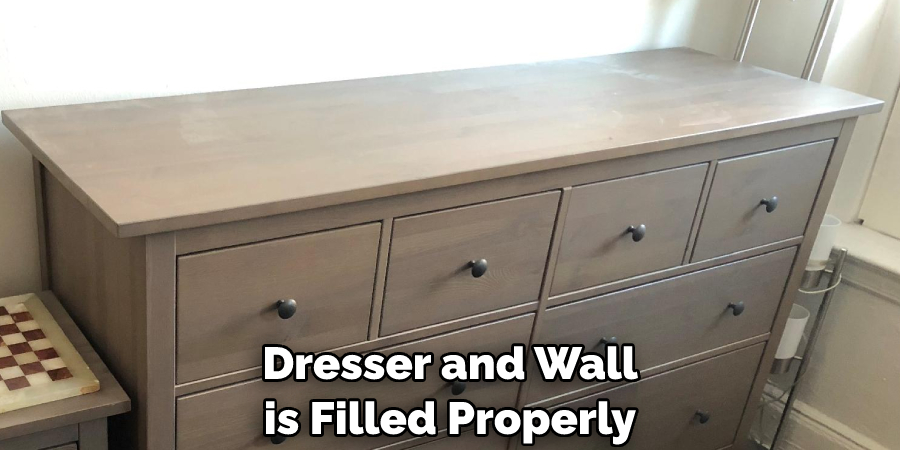
10 Methods How to Cover Gap between Dresser and Wall
1. Use a Gap Cover.
A gap cover is a simple and effective way to cover up the gap between your dresser and the wall. Gap covers are available in a variety of colors and styles, so you can find one that matches your décor. Gap covers are also easy to install, so you can do it yourself in just a few minutes.
If you have a larger gap, you may need to buy a longer one. However, gap covers are an inexpensive way to ensure that the gap between your dresser and wall is covered. Try to choose a gap cover that is slightly taller than the gaps between your dresser and wall to ensure proper coverage.
2. Use Molding.
Molding is another simple way to cover up the gap between your dresser and the wall. You can find molding at most home improvement stores, and it’s easy to cut and install yourself. Just like with gap covers, you can choose molding that matches your décor.
Once the molding is in place, it helps to conceal any gaps and make the wall look more seamless. Plus, it adds a nice decorative touch to the room. For a more polished look, you can paint the molding to match your dresser. This is an economical and relatively quick way to hide the gap.
3. Use Furniture Pads or Felt Strips.
If you want an invisible solution, furniture pads or felt strips are a good option. These can be found at most hardware stores, and they’re easy to install. Just stick them to the bottom of your dresser, and they’ll create a barrier between the dresser and the floor, preventing the gap from showing.
You can also use them to cover any gaps between the dresser and the wall, creating a tidy look. These pads or strips come in a variety of colors, so you’ll be able to find one that matches your dresser. They’re also very affordable, and they’ll last a long time.
4. Use Command Strips or Double-Sided Tape.
If you don’t want to drill holes into your dresser or wall, command strips or double-sided tape are a good option. Just attach them to the dresser and wall, and they’ll hold the dresser in place. Be sure to use strips that are strong enough to support the weight of your dresser, though. You may also want to consider using a few extra strips for added security.
5. Use L-Brackets or Corner Braces.
L-brackets or corner braces are another options for attaching your dresser to the wall without drilling holes. Just screw them into the wall and dresser, and they’ll create a strong connection between the two pieces of furniture. Be sure to use brackets that are rated for the weight of your dresser, though.
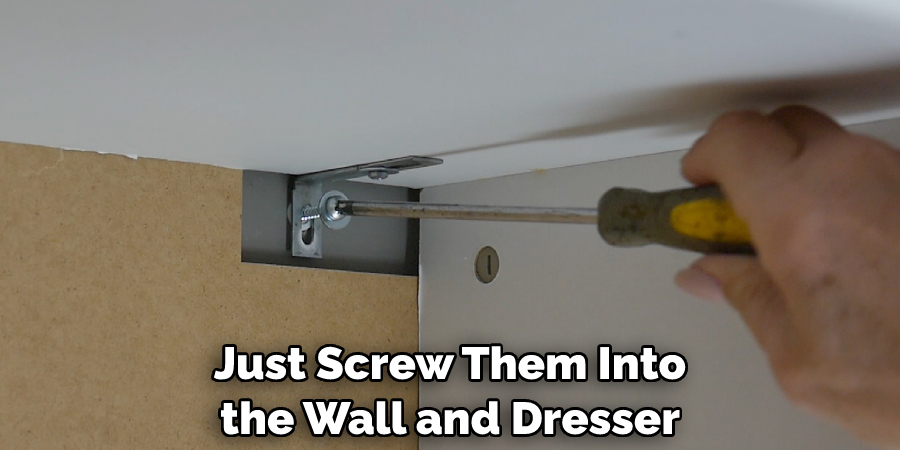
6. Use a French Cleat System.
A French cleat system is a more permanent way to attach your dresser to the wall without drilling holes. With this system, you’ll need to screw two strips of wood into the wall and dresser (one strip on each piece of furniture). Then, you’ll connect the two strips using special brackets (called French cleats). This system is very strong, so it’s perfect for heavier dressers.
7. Use a Desk Hutch.
If you want to completely cover up the gap between your dresser and wall, you can use a desk hutch. Desk hutches are tall, thin pieces of furniture that can be placed on top of your dresser to help create a seamless connection between the two surfaces. Not only is this an effective way to cover the gap, but it also adds additional storage space and decorative elements to your bedroom.
8. Use a Decorative Dresser Skirt.
Dresser skirts are a great way to cover up the gap between your dresser and wall in style. Dresser skirts are made from a variety of fabrics and come in many designs, from classic to modern. You can hang them with curtains or drapery rods, tuck excess fabric into the sides of the dresser, and even add decorative trim.
9. Use Shims.
Shims can be used to fill in the gap between your dresser and the wall. Just measure the height of the gap and select the right size shim to fit. Take one end of the shim and insert it into the dresser’s frame, then slide the other end in between your wall and dresser. You can use a hammer or rubber mallet to tap down the shim so it is secured in place. This will help prevent your dresser from moving and shifting around.
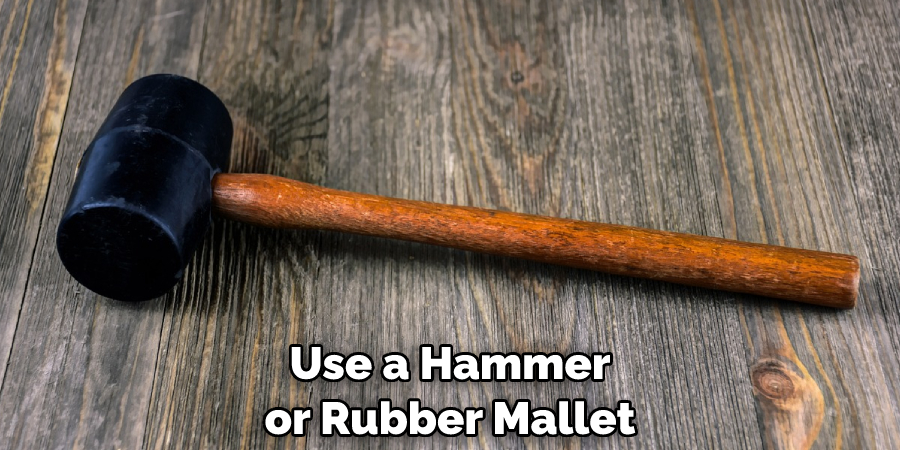
10. Use Expanding Foam.
If you’re looking for a more permanent solution, then expanding foam is a good option. It’s great for filling large gaps and can be used to seal off any air or moisture that could leak through. Just make sure to wear gloves and safety goggles while using it as it can cause skin irritation. Additionally, make sure you purchase the right type of foam for your specific job as some foams are designed specifically for outdoor use.
Conclusion
Overall, covering the gap between your dresser and the wall can make your bedroom look much more visually appealing and create a far cozier atmosphere. Whether you invest in an eye-catching border piece, opt for a strong adhesive sticker to cover the space up, or install wainscoting to bridge the unevenness, there are plenty of options out there.
Weigh up each strategy against your budget and personal tastes and hone in on what looks best for you. Hopefully, this article gave you some helpful tips about how to cover gap between dresser and wall successfully, so now that you have the proper knowledge on how to get the job done, why not give it a try today?
